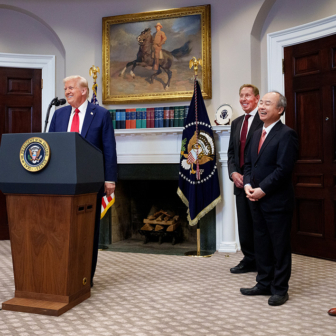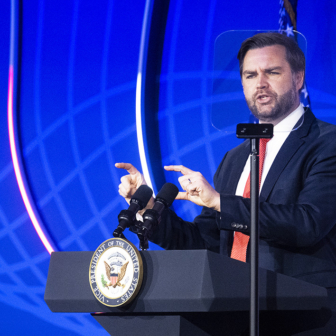The short list for this year’s Global Mobile Messaging Awards provides a window to the future. One of the finalists in the Innovation in Messaging category is SpinVox Messenger, an application that “automatically converts a voice message into text and delivers it directly to the recipient as an SMS, ensuring call completion (and) stimulating call continuity”. The spoken word segues into text of its own accord, without the need for human intervention. “Messaging,” comments one of the judges not quite illuminatingly, “is helping us to re-examine the importance of voice.”
The eventual winner in the Innovation category also does what it does automatically; in this case by “automatically saving every text and photo message on line.” The evanescence that was so much part of the essential character of mobile text messages is a thing of the past; “your taxi is on approach” can now live forever on the hard drive. In another example of the unlimited potential of text messages, we learn from pangolinsms.com that “Pangolin’s Interactive Messaging Unlimited software is perfect for concerts,” where it is used to display SMS text messages on giant TV screens onstage, a practice that has been growing in popularity over the last few years. Again something that seemed so innately characteristic of the text message, a private communication transmitted to a screen only just big enough to read from, is transformed into a public display. How did it all happen, and so quickly?
Text messaging, or SMS, began almost by accident. It was borne along in the early nineties in the slipstream of the mobile phone, as a by-the-way function – handy but to the phone companies not self-evidently essential – that rapidly and unexpectedly became a phenomenon in its own right. For many people, particularly younger people, texting became the preferred form of electronic or indeed any other communication. Against the discursiveness of email the text message, from within its miniaturised frame, got the essential point across with as little fuss as possible.
In a study of the mobile habits of psychology students at the University of Padova which appears in Mobile Phone Cultures, a volume of essays edited by Gerard Goggin of the University of New South Wales, Alberta Contarello and others note that of all the functions and qualities the participants associated with mobile communication SMS came first (ahead of, for example, convenience, reachability or fashion). The authors observe in passing that SMS is a “user design variant,” which is true to the extent that the explosion of interest in texting in the mid to late nineties was not anticipated. The market, in effect, voted with its thumbs.
As Alex S. Taylor and Jane Vincent point out in “An SMS History” (in Lynne Hamill and Amparo Lasen’s Mobile World: Past, Present and Future), “early SMS campaigns to promote the delivery as well as receipt of messages… positioned the service as a second-rate add-on to voice transmissions.” To them, “what now seems striking and somewhat peculiar is the idea that messages were not considered to be something that people would compose themselves on their mobile phones.”
In retrospect, the key factor in the take-up of texting seems to be what was thought of as its Achilles heel, the limitation to 160 characters per message. “Paradoxically,” Taylor and Vincent write, “the limit of 160 characters and the cumbersome and time-consuming multi-tap method for entering text… struck a chord with users, particularly younger ones.” Other forms of electronic communication – emailing, blogging – impose no meaningful constraints. You can go on forever if you want to. But texting was different, though it is changing now. The constraints were severe and in the way of constraints they also posed a challenge. If it couldn’t be said in 160 characters (fewer in some other languages) then perhaps it wasn’t worth saying.
THE GOLDEN YEARS of the text message already seem to be behind us, back in the late nineties and the first few years of the new century. This was the time when the text message was in its pure state, before MMS and before the capacity to send multiple messages and to include fancy accoutrements like attachments and embedded links; when the message just said what it had to say, unencumbered by qualifying clauses. A text message could be read rather than navigated or scanned, because there wasn’t enough there to navigate. In its abbreviated simplicity it offered a welcome alternative to the endlessness of everything else. The vexed question of when to stop writing – an email, a blog entry – just didn’t arise. You had to stop, because you ran out of space.
Some see this enforced brevity as the heart of the problem. For them, the text message and its cousin instant messaging embody everything that has gone wrong with language, as we forsake complexity and nuance and the time-consuming courtesies in favour of, linguistically speaking, the short sharp shock. For others, the text message holds the key to the revitalisation of language, as it encourages us to find all sorts of new and inventive ways to say more with less. It stops us rambling on. It makes us think. David Crystal, in his recent book on the subject, txting: the gr8 db8, inclines towards the latter view, but only in the face of what he calls the “extraordinary antipathy” to this new – or maybe not so new – way of writing.
In a comment on the Oxford University Press blog posted shortly after publication, Crystal laments the fact that the antipathy he identifies in his book continues unchecked by any evidence to the contrary. He quotes the remark made by a spokesman for the Head Teachers’ Association of Scotland who seemed uninfluenced by Crystal’s anti-alarmist findings: “Because of the rate in which text-speak is taking hold,” says the spokesman, “I shudder to think what letters will look like in 10 years’ time.” There is no need to panic, says Crystal. He makes the case for the energy and inventiveness of texting, adding reassuringly if not entirely consistently that the sorts of things that texting relies on – abbreviations, acronyms, vowel-less sentences, and all manner of language-play – have been around forever.
Another scholar of texting and mobile telephony – it’s a fast-growing field – comes to very similar conclusions. In Always On: Language in an Online and Mobile World Naomi S. Baron adopts a fairly relaxed tone on the where’s-it-all-heading question, reassuring the doom-sayers that “in reality, there are relatively few linguistic novelties specific to electronically mediated language that seem to have staying power.” In other words, it’s inventive, but not so inventive that it risks changing language out of all recognition. Indeed Baron sees some virtue in the way in which text messaging demands concision. By contrast, in a reference to electronic writing generally, she asks whether it could be that “the more we write online, the worse writers we become?”
Could it be, Baron wonders, that the “sheer amount of (electronic) text” being produced is “diminishing our sense of written craftsmanship”? In some ways this is counter-intuitive, particularly if we subscribe to the adage that practice makes perfect. If writing makes you a better writer, then surely even more writing makes you an even better writer. But only, perhaps, if you edit as you write. “Murder your darlings,” Sir Arthur Quiller-Couch famously said in his advice to authors, and the Cut function on Word came along to make it easier. The problem is that the darlings won’t stay dead. Those excised phrases and paragraphs often lurk underground, waiting to be resuscitated, and very often they are, not least because there is room for them. If the system allows it, why not say more? Guidelines for web writing typically begin with a version of the injunction “make it short,” but for all that the content of the average website just grows and grows. Only with the text message are you forced to keep it short, whether you want to or not.
Keeping it short means leaving out the non-essential bits. The more non-essential bits we leave out, the more concision can elide into compression, and clarity into confusion. Which is why, Baron notes, “scores of journalists are apparently in agreement that our linguistic prospects are bleak,” a reference to the sub-genre of opinion- and think-pieces that regularly declare that the linguistic end is nigh and that very soon we will each of us have no idea what anyone else is saying. And it is not only journalists who feel this way. The New York Times records James H. Billington, the librarian of Congress, drawing laughter at the launch earlier this year of a Pew Research Centre report into student writing when he expressed concern about “what he called ‘the slow destruction of the basic unit of human thought, the sentence,’ because young Americans are doing most of their writing in disjointed prose composed in Internet chat rooms or in cellphone text messages.”
David Crystal singles out his candidate for the most apocalyptic of all such cries of pain. It comes from the distinguished journalist and broadcaster John Humphrys, writing in the Daily Mail of 24 September 2007, who described texters as “vandals who are doing to our language what Genghis Khan did to his neighbours eight hundred years ago.” Even allowing for hyperbole, this seems extreme. But Humphrys’s rant is not quite as unfettered as this extract might suggest. What prompts his outburst is the news that the Oxford English Dictionary has dropped the hyphen from 16,000 compound words on the grounds that we are all too busy for hyphens. We must change the way we write, reports Humphrys, because “we no longer have time to reach for the hyphen key.” The objection, as it so often is, is not so much to texting – or fast food or fast anything – as it is to the pressure we are under and the way in which that pressure seems to speed up time. It’s not so much about the abbreviation itself, but about the need to abbreviate in the first place. Why shorten everything? What’s the rush?
Humphrys is particularly venomous when it comes to the abbreviations used in texting and email, describing them as “grotesque.” In the early days of text messaging it was all harmless enough: “tks” for “thanks”; “u” for “you”; 4 for “for.” But now it is much more complicated, as texters “have sought out increasingly obscure ways of expressing themselves.” Lists abound on the internet of acronyms, alphabetisms, and other combinations of letters and numbers that far exceed the lexicon that even the most committed texter would necessarily take the trouble to master. Abbreviation becomes an end in itself, rather than a means to an end. A kind of verbal nanotechnology. Webopedia’s “Text Messaging Abbreviations: A Guide to Understanding Online Chat Acronyms & Smiley Faces” was up to 970 entries at last count, but is looking for more. “If you know of a text message abbreviation that is not included in our list, please let us know.” This suggests an exercise that has gone beyond an anthropological record of practice to become a call for creativity and invention. PXT. Please explain that.
Abbreviated and otherwise modified language may look streamlined, but it can often take longer to put together than the conventional kind, and longer to pull apart. Ill-literacy, a San Francisco-based “collective of poets, emcees, and all-around fresh individuals,” zero in on this paradox when two of their number – Ruby Veridiano-Ching and Nico Cary – perform a stand-up routine on the subject of text-messaging that elicits cries of recognition from their mostly college audiences. “The great thing about text messaging,” says Cary in a performance that can be found in several iterations on YouTube, “is that you don’t have to respond right away. You can carefully craft each message so that you sound witty.”
Against the commonly stated view that texting is not really writing at all, but rather a hybrid of the written and the spoken, Cary emphasises its writerliness, the ability it gives to present a version of yourself in haiku form, rather than the version that comes across in unmediated speech. Some of this careful crafting that he talks about involves deciding whether or not to break the rules, or whether in fact breaking the rule has itself become the rule. “Should I spell ‘what’ ‘w-h-a-t’, ‘w-a-t’ or ‘w-u-t’”? he asks plaintively. And when, having finally sent the carefully crafted message, you don’t get a response for forty-five minutes, it can “drive you fuckin’ crazy”. So powerful is the illusion that texting is spontaneous and natural that even though it has taken three quarters of an hour to compose your message, once it’s been sent you expect an immediate reply.
In a study undertaken at the University of Plymouth, researchers divided their student participants into two groups, texters and talkers, according to the predominant use they made of their mobile devices. “The fact some people prefer texting to talking suggests that they get something out of texting that they cannot get from talking… They committed more time and effort to the process of message composition, writing longer messages and editing them more carefully, expressing things in their messages they may not have felt comfortable saying face-to-face.” This conveys the sense that texting is more deliberative than it appears, that it allows you to present another version of yourself than the one people see in front of them: an alternative to speech rather than a version of it. And it us best not to mix them up. As the netiquette advice provided on txtmania.com has it, “as much as possible, avoid texting while in a conversation with real people.”
Texting takes time, even when it doesn’t seem to. In the Pew Research Centre report that prompted the remark from the Librarian of Congress about the decline of the sentence, a ten year old is quoted as saying that “I put in 20 hours [per week] plus [texting]. I can’t even count because I mean it’s not like you’re spending a continuous hour writing/texting. It’s just like text, text, text while you’re doing other stuff.” The young respondent manages to sound both casual and pressured, valuing the instantaneousness and spontaneity of the medium while clearly spending a lot of time on it. It’s just one text message after another. “Text, text, text.”
A report prepared by ANU and the Australian Mobile Telecommunications Association concluded from questionnaire data that the jury was out on whether mobile phone use alleviated people’s sense of time pressure. “Nine per cent answered ‘Yes, a lot less’; 25% answered ‘Yes, a little less’; 15% answered ‘No, not much less’; 25% ‘No, not at all’ and 26% were unsure,” figures which, taken together, tend to leave the question open. Meanwhile, reports on the ease and utility of text messaging – its capacity to reduce the pressure – have tended to give way in recent times to reports of its dangers, with texting while driving coming in for particular censure.
There are many signs that text messaging as a personal communication tool, for all its continuing popularity, is being overtaken, or in some cases taken over. From personal to personalised. The Obama campaign has helped pioneer the political use of high-volume text messaging to provide the illusion of two-way traffic – “sign up to the right to receive text messages on your phone,” says barackobama.com – while in effect being simply a mobile mail-out. And, the campaign site advises, “for high volume text users” (a phrase which seems explicitly to acknowledge the addictive element in texting) there is Twitter. The Google tagline for Twitter succinctly indicates the speed with which texting is being supplanted by newer and more sophisticated verbal nouns: “Social networking and microblogging service utilising instant messaging, SMS or a web interface.” Obama Mobile won its category for the 2008 Global Mobile Messaging Awards. According to 160characters.org, the website for the SMS and Mobile Messaging Association, “Obama Mobile has set the gold standard for harnessing the power of mobile technology to engage supporters and to drive a political movement.”
But for some commentators, texting is already history. According to a post of 28 August 2008 by Ed Hardy, editor of brighthand.com (a site providing news, reviews and discussion on “handhelds and smartphones of all kinds”), “texting was created back in the 1990s because people wanted email on their phones, but the technology wasn’t available yet. That’s why engineers came up with a crippled version of email that phones could handle. The technology for full email access is available now, so SMS has really outlived its usefulness.” If he’s right, and he probably is, then instead of lamenting the role of text messages in the decline of language we will find ourselves mourning the energy and liveliness and to-the-pointness of texting. The plain vanilla text message, sent from one person to another, will rapidly come to seem like the telegram of the digital age. •




